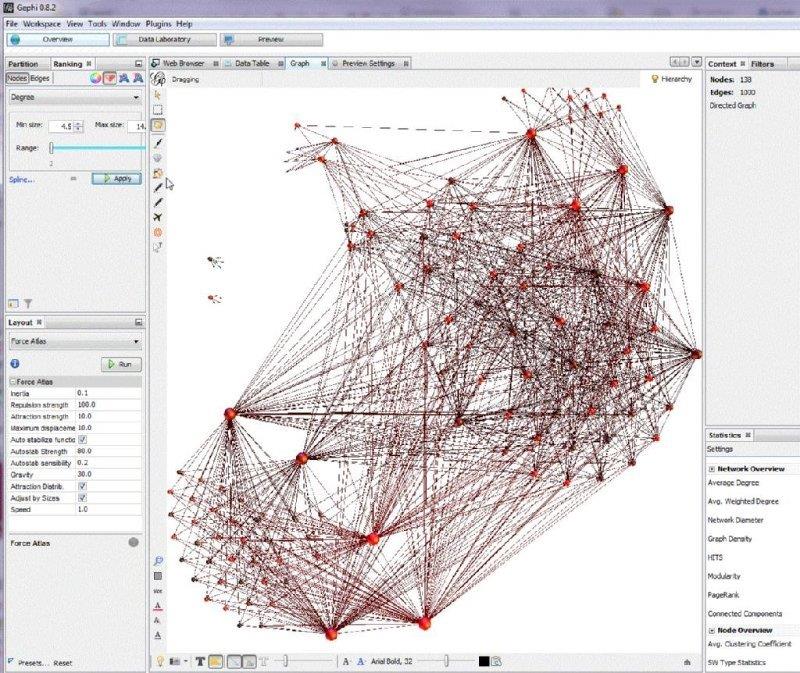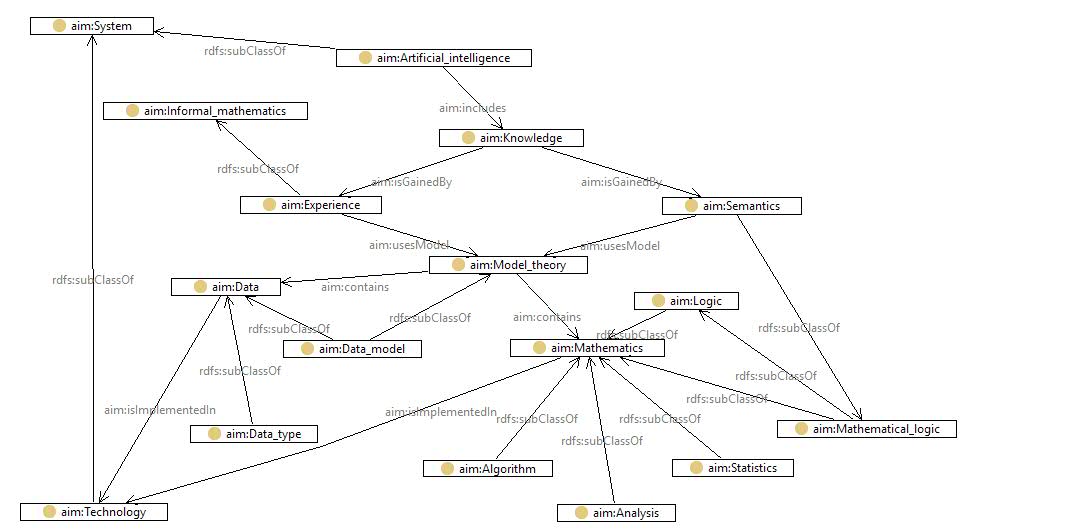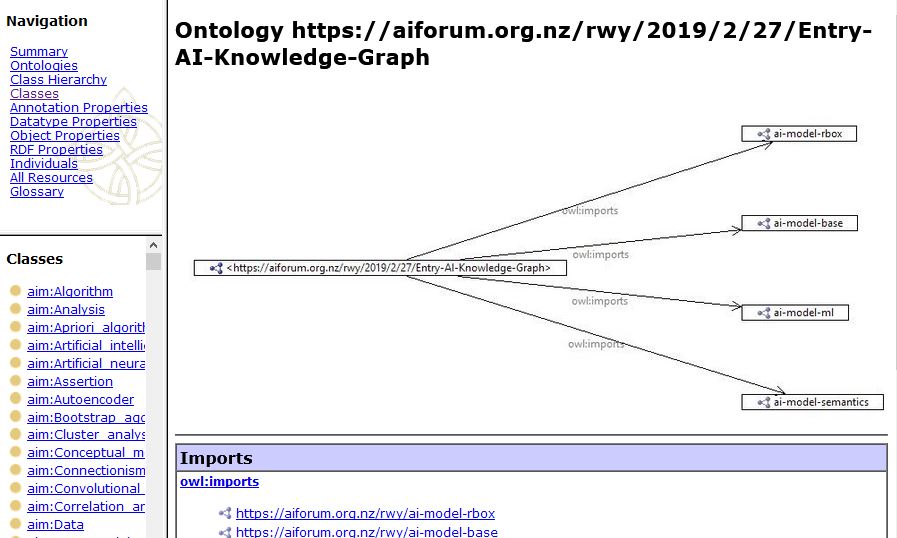Art of Formal AI-Description
Background
AI Systems are becoming more and more complex and dynamic. In many areas, these systems are becoming even superior to human beings. They are going to dynamically adapt, grow and change their knowledge continuously. May be, there won't be sequenced training, verification (= development) and prediction (= production) phases as common today in Supervised Machine Learning. Such dynamic approaches, we already can see in e.g. Reinforcement Machine Learning, Semantic Web Technologies, etc.
How can we still understand the behavior and mechanisms of such dynamic AI systems? They have to
explain themselves in a human understandable, abstracted and even machine-readable way. This
simple-looking ability has far-reaching consequences, as it aims towards Artificial Thinking
(AT); a thinking of intelligent systems about themselves.
[Most likely, I have been inspired by
René Descartes,
the French philosopher.]

Example: A (partially) Self-Describing System
Based on the automatic capture of metadata from an Enterprise Service Bus's (ESB) configurations, this image shows how an integration application was resolved with help of an ESB - and additionally documented by the ESB itself! Using a Knowledge Graph, you can, amongst others, visually abstracted identify which W3C Web Services are central to this enterprise IT environment and where performance or maintenance aspects might become an issue.
[Click on the pictures to enlarge them. Click on the titles to see/read more.]
Introduction
"How can an intelligent system dynamically acquire needed knowledge about itself, analyze it and make it explainable to human beings on a higher abstraction level?" As a first step and a practical AT study approach (as well as a try to support the AI Forum NZ at the same time), I additionally turned to the omnipresent question: "What is Artificial Intelligence (AI)?" What belongs to artificial intelligence, what not? I was wondering how to approach this question as emotionless as possible. Emotionless, suggested to me the term "formal".
AI Knowledge-Graph
An explorable, queryable model would help make discussions more objective and better understand AI/AT, as well as verify the adoption of terminology. Most likely, no one is able to comprehensively model "AI". This should be an undertaken by a community or consortium; similar to the standardized SOA Ontology from TheOpenGroup. But, I couldn’t find a machine-readable and/or even a standardized AI ontology.
Therefore, I have started to develop an extendable, open-world AI Knowledge-Graph from a technical point of view and publish it for general motivations. So, that interested persons and AI experts have the possibility to see what has been done, discuss, re-design, improve and extend the AI Ontology.
Methodology
- Two entry models have been initialized, which formally begin to describe two main AI disciplines: Semantic Web Technologies [= logical mathematics] and Machine-Learning [= experience, statistics, heuristics].
- They represent themselves as AI Knowledge-Graph with machine-readable, standardized Semantic Web Technologies.
- Explicit terms have automatically been named in different languages, typed (=classified) and annotated through generally accepted descriptions from the Linked Open Data Cloud.
- Different human readable and visualized viewpoints have been presented.

AI Entry Models
The following page shows the underlying AI starting models: The Base Model with some common used terms and relationships. The Semantics Model with some terms and relationships used in respect to Semantic Web Technologies & Linked Open Data. And, the Machine Learning Model with some terms and relationships used in respect to Machine Learning.

AI Ontology Layers
The AI Knowledge-Graph has been thought to be used as a practical entry model to deliver a formal approach in respect to the question "What is Artificial Intelligence?". The AI Knowledge-Graph (= Ontology) starts with 4 abstraction layers (= ontologies), which represents the three underlying, machine-readable "AI Entry Models" from above through a well defined and standardized metadata language.

AI Terms, Hierarchies and Relationships
You can also have a look at the whole AI Knowledge-Graph (without automatic reasoning) in generated static web pages. Try, and play with.

Visual Impressions
With the help of Gephi, I have created two visual representations of one and the same subgraph for reasons of clarity based on the "aim:" namespace only. We realize immediately and much better than in tabular form the knowledge about the semantic web technologies on the left, the machine learning on the right and the connecting concepts in between. The red node in the middle describes Mathematics.
Text-Search the AI Knowledge-Graph
As an example, there are already typed in the text Semantics and the aim-index selected. You should then see the corresponding subject-predicate-object triples/statements. If you hoover over any name of the triple it will be linked to further informations. Try an other search (e.g. Logic).
Query-Search the AI Knowledge-Graph
As an example, there is already typed in a query to show the occurrence of each predicate. Below, you should then see the corresponding frequency. It's also possible to activate a reasoning engine and/or to limit the result set.
The standardized W3C query language is defined under SPARQL Query Language for RDF. Under SPARQL in 11 Minutes, you can get a corresponding introduction.

Description in Logic
This is a formal example how to describe the merged models in the AI Knowledge-Graph through generated Description Logic. The term "Description Logic" is described in the AI Knowledge-Graph, too.
Some Acknowledgements
For me, as an individual, it wouldn't have been possible to do all my studies and examples without the existence of Open Source and trial software, Massive Open Online Courses (MOOC), a lot of interesting books and articles in the internet.THANK YOU!
 Source: https://radiuspoint.com.
Source: https://radiuspoint.com.
Some ToDo's ? ... Improvements ?
A list of some ideas.
Closing Remarks
What has been done? Based on 3 simple reference models, existing machine-readable information on terms (= concepts) was automatically selected from the Internet (DBpedia), linked together and put in context of the question "What is artificial intelligence?". This context has provided a certain entry point and orientation help using well-accepted term definitions and descriptions, so that some answers to the question can be found in a human, explorative way as well as through machine-oriented navigation.
 Source:
Source: